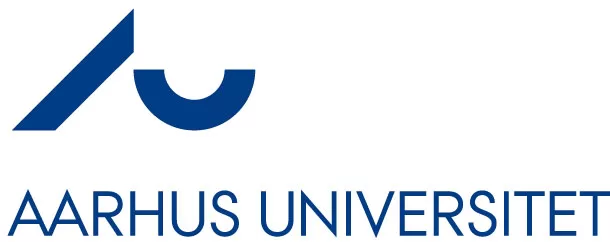The 2024 ESC guidelines highlight Medis QFR® with 3 recommendations1:
The Guidelines also note that QFR®’s capability for microcirculatory assessment enhances its value as a comprehensive physiology platform. These endorsements underscore Medis QFR® as a leading choice of interventional physicians in management of the chronic coronary syndrome pathway.




Medis QFR® utilizes two angiographic projections for the quantitative assessment of physiology in epicardial arteries. Arterial plaques are often eccentric, requiring at least two orthogonal views to evaluate a coronary artery lesion. This approach resolves the challenge posed by eccentric lesions that may be hidden with the use of a single angiographic view and mitigates the risk of vessel shortening associated with a single projection7.
Lorem ipsum dolor sit amet, consectetur adipiscing elit. Ut elit tellus, luctus nec ullamcorper mattis, pulvinar dapibus leo.
For optimal 3D vessel reconstruction, Medis QFR® requires only two projections. It is advisable that these captured projections be orthogonal, featuring minimal overlap within the target segment to ensure accurate reconstruction.
AI enabled end diastolic frame selection helps save valuable time and minimizes user variability during the analysis. Deep learning further helps ensure precise alignment between the two angiographic projections ensuring consistent and reliable measurements which leads to an accurate QFR assessment.
Medis QFR® provides a complete assessment of the target segment including the 3D reconstruction of the segment and quantitative assessment, which includes lesion length, per lesion ∆QFR*, %Stenosis and Residual QFR*. The dQFR/ds further provides the local severity of a lesion in the analyzed segment establishing the presence or absence of Focal disease.
From assessing coronary lesions to determining optimal treatment strategies and more*
Efficiently evaluate coronary lesions for severity and morphology, guiding informed decisions on intervention or safe deferral.
Confirm lesion severity with Medis QFR®’s precise measurements, adding an extra layer of accuracy and confidence to interventions.
Judge treatment outcomes confidently using Medis QFR®’s proven insights, prioritizing patient safety and positive outcomes.
Simpler Intuitive workflow, applicable for online and offline usage.
No pressure wire, no hyperaemic agent, reducing treatment costs and procedure time.
Evidence from over 17.000 patients and 20.000 lesions across 200+ peer-reviewed articles.

Medis QFR® utilizes two angiographic projections for the quantitative assessment of physiology in epicardial arteries. Arterial plaques are often eccentric, requiring at least two orthogonal views to evaluate a coronary artery lesion. This approach resolves the challenge posed by eccentric lesions that may be hidden with the use of a single angiographic view and mitigates the risk of vessel shortening associated with a single projection7.
Lorem ipsum dolor sit amet, consectetur adipiscing elit. Ut elit tellus, luctus nec ullamcorper mattis, pulvinar dapibus leo.
For optimal 3D vessel reconstruction, Medis QFR® requires only two projections. It is advisable that these captured projections be orthogonal, featuring minimal overlap within the target segment to ensure accurate reconstruction.
AI enabled end diastolic frame selection helps save valuable time and minimizes user variability during the analysis. Deep learning further helps ensure precise alignment between the two angiographic projections ensuring consistent and reliable measurements which leads to an accurate QFR assessment.
Medis QFR® provides a complete assessment of the target segment including the 3D reconstruction of the segment and quantitative assessment, which includes lesion length, per lesion ∆QFR*, %Stenosis and Residual QFR*. The dQFR/ds further provides the local severity of a lesion in the analyzed segment establishing the presence or absence of Focal disease.
faster than wire-based FFR guided
approach [10]
Interventional cardiologist / Cardiologist

“We are excited to launch Medis QFR® in the VA Connecticut Cardiac Catheterization Laboratory. This innovative technology helps us provide cutting-edge, guided care to our Veterans with coronary artery disease.”
Interventional cardiologist / Cardiologist

This technique is simpler, safer and less expensive with equivalent outcomes and will conceivably be readily and widely adopted. Angiographically derived FFR, and specifically QFR®, should, in the future, be used routinely, reserving the invasive wire-based FFR approach for the challenging minority of cases where QFR® accuracy is questioned.
Interventional cardiologist / Cardiologist

“State-of-the-art approach in acute coronary syndrome targets on the “pancoronary risk”. This can be assessed easily, safely, and reproducibly by QFR®.”
Interventional cardiologist / Cardiologist

Interventional cardiologist / Cardiologist

Clinical Researcher

Medis QFR® stands out with its proven exceptional accuracy both in clinical settings and in the Core Lab
QFR® vs angiographic assessment

Diagnostic Performance of In-Procedure Angiography-Derived QFR Compared to Pressure-Derived FFR: FAVOR II Europe-Japan
“Online computation of QFR in the Cath Lab is clinically feasible and superior to angiographic assessment for evaluation of intermediary coronary artery stenosis using FFR as a reference standard”
A prospective observational, investigator-initiated study with 329 patients enrolled
Reference:
QFR® vs wire-based FFR

Quantitative Flow Ratio: Meta analysis & systematic review
“Excellent correlation and agreement between QFR and FFR was demonstrated. QFR value below the threshold of 0.80 optimally predicts functional significance of coronary stenosis.”
QFR® vs wire-based iFR

Diagnostic Agreement of Quantitative Flow Ratio With Fractional Flow Reserve and Instantaneous Wave‐Free Ratio
“QFR showed excellent correlation and diagnostic performance for both invasive pressure–derived physiologic indices (FFR and iFR), regardless of clinical presentation.”

Quantitative flow ratio (QFR) is the only angiography-based physiological index that has been prospectively validated and has already been demonstrated to be associated with improved clinical outcomes when used to decide upon coronary revascularization, compared with conventional angiography. – EuroIntervention 2023: Expert Consensus

Dr. Samit Shah, renowned from Yale School of Medicine & New Haven VA, delivered an insightful overview of angiography-based physiology at the recent TCT 2023 conference. Dr. Shah highlighted the transformative potential of non-invasive coronary physiology (NCP), with Medis QFR® in reshaping the diagnosis and treatment of coronary artery disease.

At TCT 2023, Dr. Yuhei Kobayashi, MD showed the transformative power of Medis QFR® in reshaping clinical practices within the Cath Lab.
Simplifying the Medis QFR® process, he highlighted its efficiency—requiring two orthogonal views of the angiogram. Through automated detection, the software generates a 3D dimensional model with a calibrated Medis QFR® value against Fractional Flow Reserve (FFR).

Focusing on non-obstructive coronary arteries, the presentation of Dr. Olga Toleva at TCT 2023 highlights the challenges in microvascular dysfunction assessment and introduces promising advancements in non-wire-based techniques.
Medis have built a robust partnership with our distributors to meet your needs. Our enduring collaboration with our partners gives us the flexibility to support you wherever you are.


Medis QFR® is very easy and seamless to adopt/incorporate into your current clinical practice for your physiology needs. The Medis QFR® software can be installed on a regular PC or a laptop of your choice. Medis QFR® has the capability to receive DICOM images from your enterprise cath lab system and PACS. This will help you perform both prospective and retrospective analysis of QFR® from patient angiograms. The QFR® analysis software can be made available on the large screen monitor in the Cath lab, to make measurements by the physician in real time and in the sterile environment. The software can also be used in the control room by the technicians and nursing staff and the results reviewed in the end by the physician.
Medis QFR® is an angiography image-derived physiology measure. QFR® simplifies the process of measuring physiology without the need of invasive wires, which are needed for metrics like FFR and iFR. The wire-based measures can consume between 15-30 minutes per measurement during the procedure. QFR® helps simplify the cost of the physiology procedure by eliminating the consumables, pressure wire and hyperemic pharmaceuticals like Adenosine.
The QFR® analysis per target vessel segment is completed in less than 60 seconds.
Quantitative flow ratio (QFR®) is an innovative technique that allows for the calculation of FFR (Fractional Flow Reserve) using three-dimensional quantitative coronary angiography (3D QCA) constructed from two angiograms. Unlike traditional methods, QFR® does not rely on hyperaemic agents like adenosine, and there’s no necessity for a pressure wire. QFR® has a user-friendly interface and offers a straightforward, valuable, and non-invasive approach to assess the functional significance of coronary artery stenosis.
Reference
* This decision-making / treatment planning claim does not have FDA clearance and can therefore NOT be used in the USA
Some features are not available or approved in all geographic regions
3D-QCA and QFR measurements can be applied to X-ray images of the 4 major equipment manufacturers (GE, Philips, Siemens, Toshiba), and other vendors.
2. EuroIntervention 2023;19:464-481. DOI: 10.4244/EIJ-D-23-00194
3. Milzi A. et al., Coronary microvascular dysfunction as assessed by angiography-derived index of microvascular resistance co-localizes with and may explain the presence of ischemia in stress-cardiac magnetic resonance imaging in the absence of coronary artery disease. Cardiovasc. Med., 24 November 2022. Sec. Coronary Artery Disease. Volume 9 – 2022| https://doi.org/10.3389/fcvm.2022.1060764
4. Dettori R. et al., Quantitative Flow Ratio Is Associated with Extent and Severity of Ischemia in Non-Culprit Lesions of Patients with Myocardial Infarction. J Clin Med. 2021 Oct; 10(19): 4535. Published online 2021 Sep 30. doi: 10.3390/jcm10194535
5. Ullrich H. et al., Quantitative Flow Ratio or Angiography for the Assessment of Non-culprit Lesions in Acute Coronary Syndromes: Protocol of the Randomized Trial QUOMODO. Front. Cardiovasc. Med., 04 April 2022. Sec. Coronary Artery Disease. Volume 9 – 2022 |https://doi.org/10.3389/fcvm.2022.815434
6. Song L. et al., Quantitative flow ratio-guided strategy versus angiography-guided strategy for percutaneous coronary intervention: Rationale and design of the FAVOR III China trial. Am Heart J. 2020 May:223:72-80. doi: 10.1016/j.ahj.2020.02.015. Epub 2020 Feb 24.
7. Rigatelli et al: Modern atlas of invasive coronary angiography views: a practical approach for fellows and young interventionalists. Int J Cardiovasc Img 2022; doi.org/10.1007/s10554-021-02489-5
8. Biscaglia, S., Tebaldi, M., Brugaletta, S., Cerrato, E., Erriquez, A., Passarini, G., Ielasi, A., Spitaleri, G., Di Girolamo, D., Mezzapelle, G., Geraci, S., Manfrini, M., Pavasini, R., Barbato, E., & Campo, G. (2019). Prognostic Value of QFR Measured Immediately After Successful Stent Implantation: The International Multicenter Prospective HAWKEYE Study. JACC. Cardiovascular interventions, 12(20), 2079–2088. https://doi.org/10.1016/j.jcin.2019.06.003
9. 2-Year Outcomes of Angiographic Quantitative Flow Ratio-Guided Coronary Interventions<Song L. et al., J Am Coll Cardiol. 2022 Nov, 80 (22) 2089–2101
10. Westra J. et al., Diagnostic Performance of In-Procedure Angiography-Derived Quantitative Flow Reserve Compared to Pressure-Derived Fractional Flow Reserve: The FAVOR II Europe-Japan Study. J Am Heart Assoc. 2018. DOI: 10.1161/JAHA.118.009603
Medis QFR® has market clearance for Argentina, Australia, Brazil, Canada, Chile, all European Member States (CE), Indonesia, Japan (PMDA), Malaysia, Saudi Arabia, Singapore, South-Africa, South Korea, Turkey, United Kingdom and United States (510(K)).
©2025 Medis Medical Imaging Systems B.V. All rights reserved.